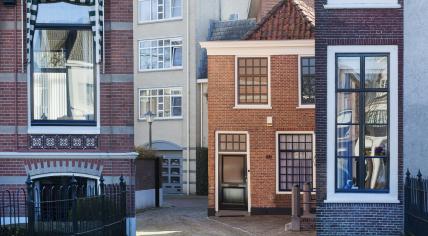
Climate change poses financial risks for homeowners in 900 Dutch neighborhoods: ABN Amro
The Netherlands has 900 neighborhoods where homeowners could face financial ruin due to climate change, according to ABN Amro. These neighborhoods are at risk of at least one consequence of climate change, have homes with an average value lower than 350,000 euros, and residents with a household income below 35,000 euros. In these neighborhoods, protecting the home against climate change is “possibly too much to ask” for the owners, ABN Amro chief Economist Sandra Phlippen explained to NRC.
Ninety of the 900 “vulnerable neighborhoods” are at risk of two consequences of climate change, like flooding or subsidence, and also have residents with little disposable income. And in 19 of them, more than 70 percent of the homes are privately owned.
“There are many issues facing the Netherlands, and the question is what a new coalition wants to do in terms of climate measures. But we must agree that this is where the first attention should be focused, those vulnerable neighborhoods,” Phlippen said to NRC. “Look at a canal house in Amsterdam with a value of 2 million. There is a good chance that a foundation operation of 100,000 euros can be done. But if your property costs 250,000 euros, an item of around 80,000 euros is a huge loss.”
These neighborhoods are often located in cities, in the north and west of the Netherlands, and along the Maas. According to the researchers, homeowners, banks, housing associations, insurers, and provincial and municipal governments need to conduct “precise research” into properties in vulnerable neighborhoods and then provide “customized” help to keep them safe.
The Netherlands must also draw much more attention to and provide more information about climate risks when buying a house. Climate risks must be reflected in the home’s price. Currently, a low energy label already results in lower home prices. ABN Amro wants the same to be true for risks of foundation subsidence or water damage, for example. “Without a price discount, new home buyers will have to pay for repair costs, and a new generation will be left with their hands in their hair. That is unfair,” Phlippen said.
According to a recent study by Calcasa, the risks involved in climate change can knock about 10 percent off of the Netherlands’ total home value. Around 1.5 million Dutch homes are at risk of earthquakes, 3.7 million homes are at risk of flooding, and almost 2 million homes are at risk from the effects of drought.
